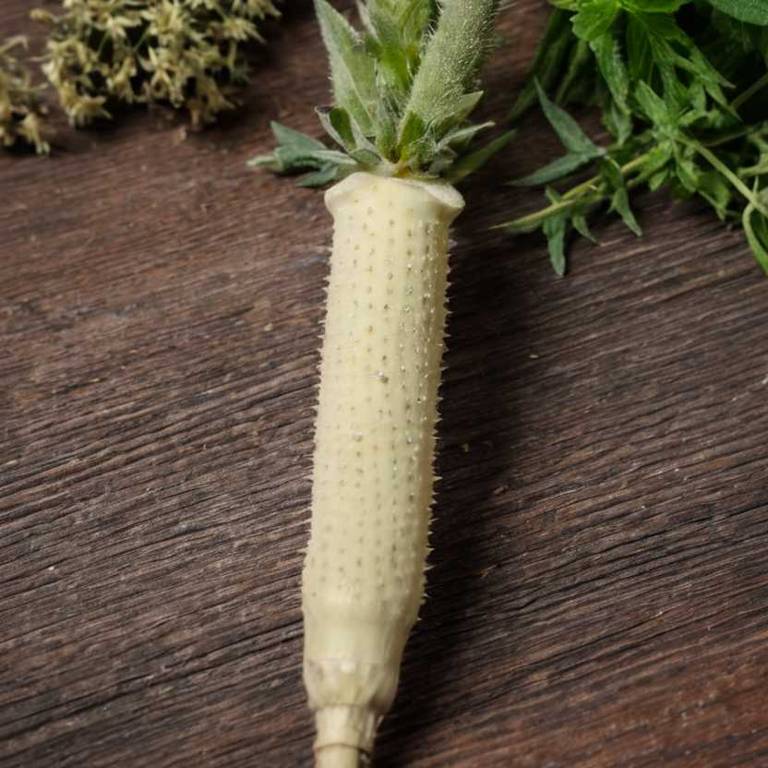By Leen Randell
Updated: Jul 20, 2024
10 Medicinal Constituents Of Verbascum Thapsus (Mullein)

Verbascum thapsus has active constituents such as ursolic acid, iridoid glycosides, and saponins.
These compounds exhibit anti-inflammatory, antimicrobial, and antioxidant properties, which are beneficial for skin and respiratory issues. The anti-inflammatory properties can soothe skin irritations and reduce inflammation, while the antimicrobial properties can help combat infections.
For example, mullein's antiseptic properties can help soothe earaches and ear infections, improving quality of life for individuals who suffer from these issues.
This article explains in details the 10 best active constituents of Verbascum thapsus.
1. Alkamides
Verbascum thapsus alkamides is a group of compounds that are responsible for its medicinal properties.
Alkamides are found in the plant's leaves and flowers, where they serve as natural defense mechanisms against pathogens and insects.
These compounds have been shown to possess anti-inflammatory, antimicrobial, and antiviral activities, making them useful for treating various health conditions such as bronchitis, arthritis, and respiratory infections.
2. Flavonoids
Verbascum thapsus flavonoids is a group of bioactive compounds responsible for its medicinal properties.
These flavonoids, including kaempferol and quercetin, have been identified in the plant's leaves, flowers, and stems.
They exhibit antioxidant, anti-inflammatory, and antimicrobial activities, which may contribute to mullein's traditional uses in treating respiratory issues, skin problems, and wound healing.
3. Saponins
Verbascum thapsus saponins is a group of bioactive compounds found in its flowers, leaves, and stems.
These saponins have been traditionally used for their medicinal properties, including anti-inflammatory, antibacterial, and antifungal activities.
They have also been shown to exhibit antioxidant and cytotoxic effects, making them a promising area of research for the development of new natural products with potential therapeutic applications.
4. Phenolic acids
Verbascum thapsus phenolic acids is a class of bioactive compounds responsible for its medicinal properties.
These acids are found in high concentrations in the plant's leaves and flowers, which have been traditionally used to treat various ailments such as bronchitis, eczema, and skin conditions.
The phenolic acids in Verbascum thapsus possess anti-inflammatory, antioxidant, and antimicrobial activities, making it a valuable resource for developing new therapeutic agents.
5. Sterols
Verbascum thapsus sterols is a type of natural plant compound found in the leaves and flowers of the mullein plant.
These sterols have been shown to possess various biological activities, including antioxidant, anti-inflammatory, and antimicrobial properties. They have also been reported to exhibit potential health benefits, such as reducing cholesterol levels and improving cardiovascular health.
Further research is needed to fully understand their effects on human health.
6. Fatty acids
Verbascum thapsus fatty acids is a composition of lipids extracted from its flowers and leaves.
These fatty acids are predominantly unsaturated, including oleic acid, linoleic acid, and palmitoleic acid.
The presence of these fatty acids has been shown to possess anti-inflammatory, antimicrobial, and antioxidant properties, making them useful in various applications such as medicine, cosmetics, and food industry.
7. Triterpenoids
Verbascum thapsus triterpenoids is a group of bioactive compounds found in the leaves and flowers of the plant.
These triterpenoids have been reported to exhibit a range of biological activities, including anti-inflammatory, antioxidant, and antimicrobial properties.
They have also shown promise in traditional medicine for treating various health conditions, such as respiratory issues, skin infections, and cancer.
8. Phytosterols
9. Amino acids
Verbascum thapsus amino acids is a complex of essential and non-essential organic compounds that play a crucial role in various biological processes.
The amino acid composition of Verbascum thapsus has been extensively studied, revealing the presence of important amino acids such as glutamic acid, aspartic acid, arginine, and lysine.
These amino acids are involved in protein synthesis, metabolism, and other cellular functions, making them essential for plant growth, development, and stress responses.
10. Glycosides
Verbascum thapsus glycosides is a group of compounds found in its flowers, leaves, and stems.
These glycosides are responsible for the plant's medicinal properties, including anti-inflammatory, antibacterial, and antiviral activities.
The most notable glycoside in Verbascum thapsus is verbascoside, which has been shown to possess antioxidant and immunomodulatory effects, making it a potential therapeutic agent for various diseases.